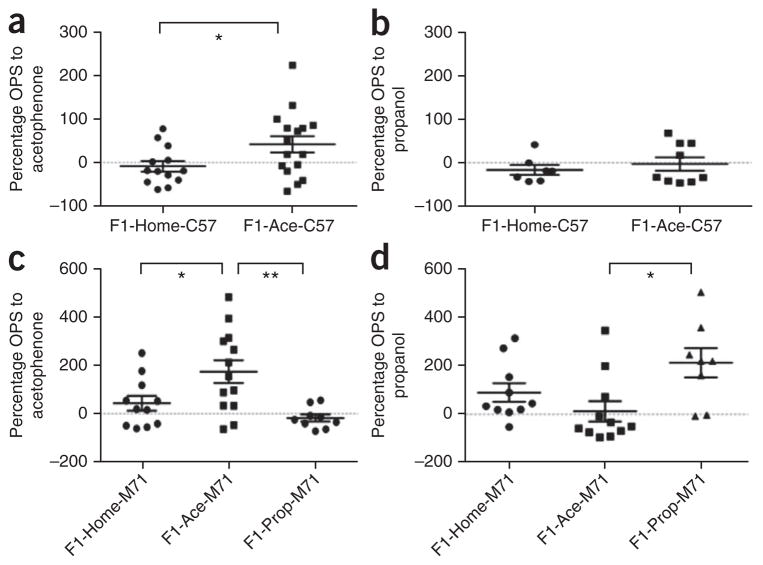Figure 1.
Behavioral sensitivity to odor is specific to the paternally conditioned odor. (a,b) Responses of individual C57Bl/6J F1 male offspring conceived after the F0 male was fear conditioned with acetophenone. F1-Ace-C57 mice had an enhanced sensitivity to acetophenone (a), but not to propanol (control odor, b) compared with F1-Home-C57 mice (F1-Ace-C57, n = 16; F1-Home-C57, n = 13; t test, P = 0.043, t27 = 2.123). (c,d) Responses of M71-LacZ F1 male offspring conceived after the F0 male was fear conditioned with acetophenone or propanol. F1-Ace-M71 mice had an enhanced sensitivity to acetophenone (c), but not to propanol (d), compared with F1-Home-M71, and F1-Prop-M71 mice. In contrast, F1-Prop-M71 mice had an enhanced sensitivity to propanol (d), but not acetophenone (c) (F1-Home-M71, n = 11; F1-Ace-M71, n = 13; F1-Prop-M71, n = 9; OPS to acetophenone: ANOVA, P = 0.003, F2,30 = 6.874; F1-Home-M71 versus F1-Ace-M71, P < 0.05; F1-Ace-M71 versus F1-Prop-M71, P < 0.01; OPS to propanol: ANOVA, P = 0.020, F2,26 = 4.541; F1-Ace-M71 versus F1-Prop-M71, P < 0.05). Data are presented as mean ± s.e.m. *P < 0.05, **P < 0.01.

